These are the best ETFs for day trading based on volume, volatility, and other metrics. Since not all traders are interested in the same thing (such as high volatility), I have created four different lists to suit different types of traders.
- Highest volume (unleveraged)
- Most Volatile (leveraged)
- Most Volatile (unleveraged)
- Best ETFs for cash accounts (if you can’t short)
All ETFs on these lists trade at least 10 million shares per day, on average.
The Best ETFs for Day Trading were updated on May 17, 2025. The list is updated monthly.
Here is a summary list of the Best Day Trading ETFs as of May 17. See the full statistics below.
| Highest Volume (unleveraged) | SPY | HYG | FXI | QQQ | XLF |
| Most Volatile (leveraged) | SOXL/SOXS | TSLL/TSLQ | UVXY | LABD/LABU | AMDL |
| Most Volatile (unleveraged) | SVIX | ETHA | ARKK | XBI | KRE |
| Best ETFs for cash accounts | SPY/SH | QQQ/PSQ | TQQQ/SQQQ |
Best Day Trading ETFs – Highest Volume (Unleveraged)
High volume means you can enter and exit quickly with minimal slippage. The ETFs on this list are for day traders seeking moderate daily price movement with huge volume so you can take small or large position sizes. These are the highest volume unleveraged ETFs. The list is ordered by volume, but you’ll see that each ETF moves a different amount each day. So you can opt to trade the ones that match your desired volume and movement preference.
Highest volume ETFs (unleveraged) as of May 17, 2025
| SPDR S&P 500 ETF Trust (SPY) – The daily average (30) volume is 90 million and the average (30) daily movement in percentage terms is 2.45%. Average daily movement is based on the Intraday Range, which is the average price movement between the high and low of the day (doesn’t include any overnight price gaps). This ETF tracks the S&P 500 index (the largest US companies), which makes it quite stable compared to individual stocks and is widely used by both day traders and investors. |
| iShares iBoxx $ High Yield Corporate Bond ETF (HYG) – The daily average (30) volume is 62 million and the average (30) daily movement is 0.75%. This ETF tracks a basket of high-yield (lower quality) corporate bonds. |
| iShares China Large-Cap ETF (FXI) – The daily average (30) volume is 58 million and the average (30) daily movement in percentage terms is 1.94%. This ETF tracks the largest 50 companies in China. |
| Invesco QQQ Trust Series (QQQ) – The daily average (30) volume is 56 million and the average (30) daily movement is 2.78%. This ETF tracks the Nasdaq 100 index. |
| Financial Select Sector SPDR Fund (XLF) – The daily average (30) volume is 55 million and the average (30) daily movement is 2.48%. This ETF tracks a wide range of stocks in the financial sector. |
Want to learn how to day trade stocks and ETFs? The Price Action Stock Day Trading Course shows you what to trade and how to capitalize on patterns that repeat over and over almost every day.
Best Day Trading ETFs – Most Daily Movement (Leveraged)
This category is for traders looking for ETFs with the most daily movement. Large daily movement has the potential to create larger profits, especially since these ETFs also have extremely high volume.
Most volatile ETFs (leveraged) with lots of volume as of May 17, 2025
| Direxion Daily Semiconductor Bear 3x Shares (SOXS) – The daily average (30) volume is 85 million and the average (30) daily movement is 15.09%. This ETF moves three times as much as a basket of semiconductor stocks, in the opposite direction. If semiconductor stocks move up 1%, SOXS moves down 3%. Trading SOXL is an alternative. It has average volume of 301 million shares, similar daily movement, and moves three times as much as semiconductor stocks in the same direction. |
| Trader 2x Short TSLA Daily ETF (TSLQ) – The daily average (30) volume is 20 million and the average (30) daily movement is 14.09%. This ETF moves twice as much as Tesla (TSLA) stock on a daily basis, in the opposite direction. If TSLA rises by 1%, TSLL will fall 2%. An alternative is TSLL. It moves twice as much in the same direction as TSLA stock. Daily average volume (30) is 223 million, and average daily movement is similar to TSLQ. |
| ProShares Ultra VIX Short-Term Futures ETF (UVXY) – The daily average (30) volume is 15 million and the average (30) daily movement is 12.54%. This ETF attempts to move 1.5 times as much as the S&P 500 VIX Short-Term Futures Index on a daily basis. |
| Direxion Daily S&P Biotech Bear 3x Shares (LABD) – The daily average (30) volume is 10 million and the average (30) daily movement is 11.6%. This ETF moves three times as much as a basket of biotech stocks, in the opposite direction. If biotech stocks move up 1%, LABD moves down 3%. Trading LABU is an alternative. It has average volume of only 2.5 million shares, similar daily movement, and moves three times as much as biotech stocks in the same direction. |
| GraniteShares 2x Long AMD Daily ETF (AMDL) – The daily average (30) volume is 23 million and the average (30) daily movement is 10.29%. This ETF moves twice as much as AMD stock on a daily basis. |
Best Day Trading ETFs – Most Daily Movement (Unleveraged)
This section is for day traders looking for high-volume ETFs that are unleveraged. That means the ETF tracks the performance of the stocks in its portfolio without any leveraging.
Most volatile ETFs (unleveraged) with lots of volume as of May 17, 2025
| Short VIX Futures ETF (SVIX) – The daily average (30) volume is 15 million and the average (30) daily movement is 8.14%. This ETF tracks the price of futures on the CBOE Volatility Index, but moves in the opposite direction. |
| iShares Ethereum Trust ETF (ETHA) – The daily average (30) volume is 13 million and the average (30) daily movement in percentage terms is 4.72%. This ETF tracks the price performance of ether. |
| ARKK Innovation ETF (ARKK) – The daily average (30) volume is 11 million and the average (30) daily movement is 4.51%. This ETF tracks a portfolio of “disruptively innovative” stocks/companies. Companies that are putting forth technology which may change how we live our lives. This fund is actively managed, making it subject to the whims and decisions of the portfolio manager. |
| SPDR S&P Biotech ETF (XBI) – The daily average (30) volume is 12 million and the average (30) daily movement in percentage terms is 3.55%. This ETF tracks a basket of biotech stocks. |
| SPDR S&P Regional Banking ETF (KRE) – The daily average (30) volume is 16 million and the average (30) daily movement is 3.16%. This ETF tracks the price movements of regional banking stocks. |
The Stock Day Trading Course shows you how to make money in the first 30 minutes after the market open (trade longer if you like) so you can make your money and then move on to other things.
Best Day Trading ETFs for Cash Accounts
This section is for day traders using a cash account. With a cash account, you’re unable to short ETFs. Cash accounts are common in tax-protected accounts. While these types of accounts are often used for long-term investing, you can also day trade a cash account (and benefit from tax protection if applicable).
Since you can’t go short, you will need to pick a long and short ETF. If you believe an index will fall, for example, you buy the “short ETF”. If you believe the index will rise, you buy the “long ETF)
Best ETFs for day trading long and short in a cash account, updated May 17, 2025
| ETF Combination 1. Monitor SPY. If you believe it will go up, buy SPY. If you believe it will go down, buy SH as it will go up when SPY goes down. This combination allows you to potentially make money whether SPY rises or falls. SPDR S&P 500 ETF Trust (SPY) – The daily average (30) volume is 90 million and the average (30) daily movement is 2.45%. This ETF tracks the S&P 500 index (the largest US companies), which makes it quite stable compared to individual stocks and is widely used by both day traders and investors. ProShares Short S&P 500 ETF (SH) – The daily average (30) volume is 10 million and the average (30) daily movement is very similar to SPY. This ETF tracks the S&P 500 index but moves in the opposite direction. |
| ETF Combination 2. Monitor QQQ. If you believe it will go up, buy QQQ. If you believe it will go down, buy PSQ as it will go up if QQQ goes down. This allows you to potentially make money whether QQQ rises or falls. QQQ has more daily movement than SPY. Invesco QQQ Trust (QQQ) – The daily average (30) volume is 56 million and the average (30) daily movement is 2.78%. This ETF tracks the largest companies listed on the Nasdaq Stock Exchange. It is mainly composed of technology-related stocks. ProShares Short QQQ (PSQ) – The daily average (30) volume is 7 million and the average (30) daily movement is very similar to QQQ. This ETF tracks the largest companies listed on the Nasdaq Stock Exchange, but it moves in the opposite direction (inverse) as them. |
| ETF Combination 3. Monitor QQQ to make your trading decisions. Then trade TQQQ if you believe QQQ will go up, or SQQQ if you believe QQQ will go down. You could also monitor TQQQ and SQQQ directly. These are leveraged ETFs meaning they will move 3x as much as QQQ. Trade these if you want lots of daily movement and high volume. ProShares UltraPro QQQ (TQQQ) – The daily average (30) volume is 139 million and the average (30) daily movement is 8.23%. This ETF moves three times as much as the QQQ ETF. If QQQ rises by 1%, TQQQ will move up 3%. ProShares UltraPro Short QQQ (SQQQ) – The daily average (30) volume is 129 million and the average (30) daily movement is very similar to TQQQ. This ETF moves three times as much as the QQQ ETF, and moves in the opposite direction (if QQQ goes down 1%, SQQQ goes up 3%, for example). |
Day Trading ETF Alternatives
ETFs are a great choice for day trading because some of them on the list are more insulated from price shocks than individual stocks. Many of the ETFs on this list are based on the price movement of hundreds of stocks; if one or even several stocks were to come out with surprise announcements, the effect is diluted and the ETF would continue to trade as normal. The individual stocks with the surprise announcements may see wild price swings, or even have their trading temporarily halted.
That said, while ETFs are more diversified than trading individual stocks, this can also dilute the daily average moves. The leveraged ETFs on this list may move 5% in a day, while the best day trading stocks may move 10% or even 15% per day.
Not all the ETFs are diluted though. Some are only based on one stock or asset. This means it may perform similarly to the underlying asset, or it may magnify the return, or move in the opposite direction if it is an inverse fund. These ETFs are highly susceptible to what happens in that underlying asset. If trading them, understand that if something goes wrong in that underlying asset (bankruptcy, flash crash, overnight gaps), that will be reflected in the ETF as well.
ETFs and stocks are both viable for day trading. One isn’t better than another, it just depends on how you want to trade. Most day trading strategies for stocks can be used with ETFs and vice versa.
Happy Day Trading!
Cory Mitchell, CMT
Disclaimer: Nothing in this article is personal investment advice, or advice to buy or sell anything. Trading is risky and can result in substantial losses, even more than deposited if using leverage.


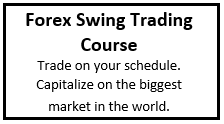
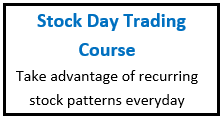
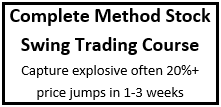
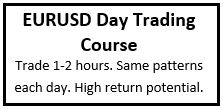
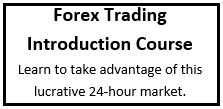
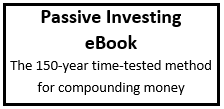
9 Comments
Leave your reply.